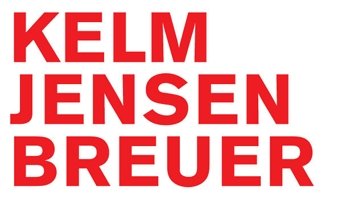Three solo exhibitions
dal 1/5/2009 al 18/7/2009
Segnalato da
1/5/2009
Three solo exhibitions
KW Institute for Contemporary Art, Berlin
Annette Kelm presents seven photographs: "enveloped by the black of the night, illuminated by artificial lighting, the leaves of the palm tree are bowing to the stormy wind.". Sergej Jensen uses linen, jute, colorful fabrics, used textiles, stretchers and frames as supports for his works. Yet, rather than being mere base matter, these materials inform the paintings' content. It is on the street, in urban space, where Wolfgang Breuer finds all the materials, objects and situations he needs. He creates subtle images by intervening in a direct and immediate, simple and quietmanner.

Annette Kelm
Enveloped by the black of the night, illuminated by artificial lighting, the leaves of the palm tree are bowing to the stormy wind. In the flashlight the partly withered palm leaves are evidence of the daytime’s sun and heat. The trunk is making a motionless stand against its blowing crown. The seven photographs of Annette Kelm’s series I Love the Little Baby Giant Panda, I’d Welcome One to My Veranda show how the storm increases. Positioned centrally, and each time shot from the same perspective, it is only the wind which varies the motif. Used as an attribute of beach and sea, the palm tree stands for sun, summer and South. Kelm’s series focuses merely on the palm tree without even disclosing its particular context. At nighttime, in the wind, and without any horizon, the palm tree lifts itself from its usual theme becoming, thus, its own effigy.
Annette Kelm’s (born 1975) exhibition at KW Institute for Contemporary Art will be her first institutional solo show in Germany.
With kind support by the Stiftung Kunstfonds
Sergej Jensen
Sergej Jensen uses linen, jute, colorful fabrics, used textiles, stretchers and frames as supports for his works. Yet, rather than being mere base matter, these materials inform the paintings’ content. Stains, holes, cracks and other traces of use become pictorial elements. Pigment, diamond dust, packthread, wool, bleach and other conditions are Jensen’s pictorial means. Longsome treatments—often over the course of several years—let the paintings emerge as if by themselves. It is being added and removed, concealed and disclosed. Visible traces become pictorial gestures, and pictorial gestures are made to seem like traces. Front sides reverse into back sides; bottoms flip into tops; right turns left. The image itself seems to determine the composition. Sergej Jensen’s painting is not mimetic as it does not attempt to picture anything. Rather, Sergej Jensen’s painting only represents itself.
Sergej Jensen’s (born 1973) solo exhibition at KW Institute for Contemporary Art will feature new works created in the last two years.
Wolfgang Breuer – Organic Food Shop
In conjunction with the credit crisis the exhibition is supposed to—and not supposed to—be like the lighting department in a hardware store, like a shop for wooden toys and like a museum shop.
(Wolfgang Breuer)
Fenced in by a blue steel wall, surrounded by a bottle bank: waiting at the bus stop. The snubby, berry-studded steel panel, the hackneyed containers, the empty bus stop: inside and outside become slippery categories and a precarious constellation emerges. It is on the street, in urban space, where Wolfgang Breuer finds all the materials, objects and situations he needs. He creates subtle images by intervening in a direct and immediate, simple and quietmanner. Breuer seems to dissolve the artificiality of the exhibition space by transferring into it the social change which occurs relentlessly throughout urban space.
Organic Food Shop, for which he has especially created an expansive installation work, is Wolfgang Breuer's (born 1966) first institutional solo show.
Opening: Saturday, May 2, 2009, 5 – 10 pm
KW Institute for Contemporary Art
Auguststrasse 69 - Berlin



